Best rock guitars: 8 of the finest rock-ready axes from Gibson, Fender, Ibanez and others
Searching for the right guitar to rock people like a hurricane? Well, this list is sure to strike a chord

As we began to debate which axes should make it onto our list of the best rock guitars you can buy today, it quickly became apparent that we had our work cut out. After all, how are you meant to reach a unanimous decision when each guitar player has their own unique tastes and way of playing?
Finally, following days of deep soul-searching, we came to an agreement that, yes, we all have our personal preferences, and yes, we all have favorite rock stars whose fretwork we’d like to imitate – but ultimately, some guitars just kick ass.
If you want to know what makes a rock guitar… rock, hit the buying advice button above. If you want to get straight to our top picks, keep on scrolling.
Best rock guitars: Guitar World’s Choice
Ever watched the Guns N’ Roses November Rain video with Slash playing guitar outside a church and wished you could recreate the moment at home? Well, there’s no guarantee you’ll look as cool as the behatted axeman, but tonally a Gibson Les Paul Standard will get you right on the nose.
If you prefer the look and sound of a superstrat, try the Ibanez RG550, a guitar that’s renowned for its effortless playability, unrivalled expression and shred/metal tones.
Best rock guitars: Product guide
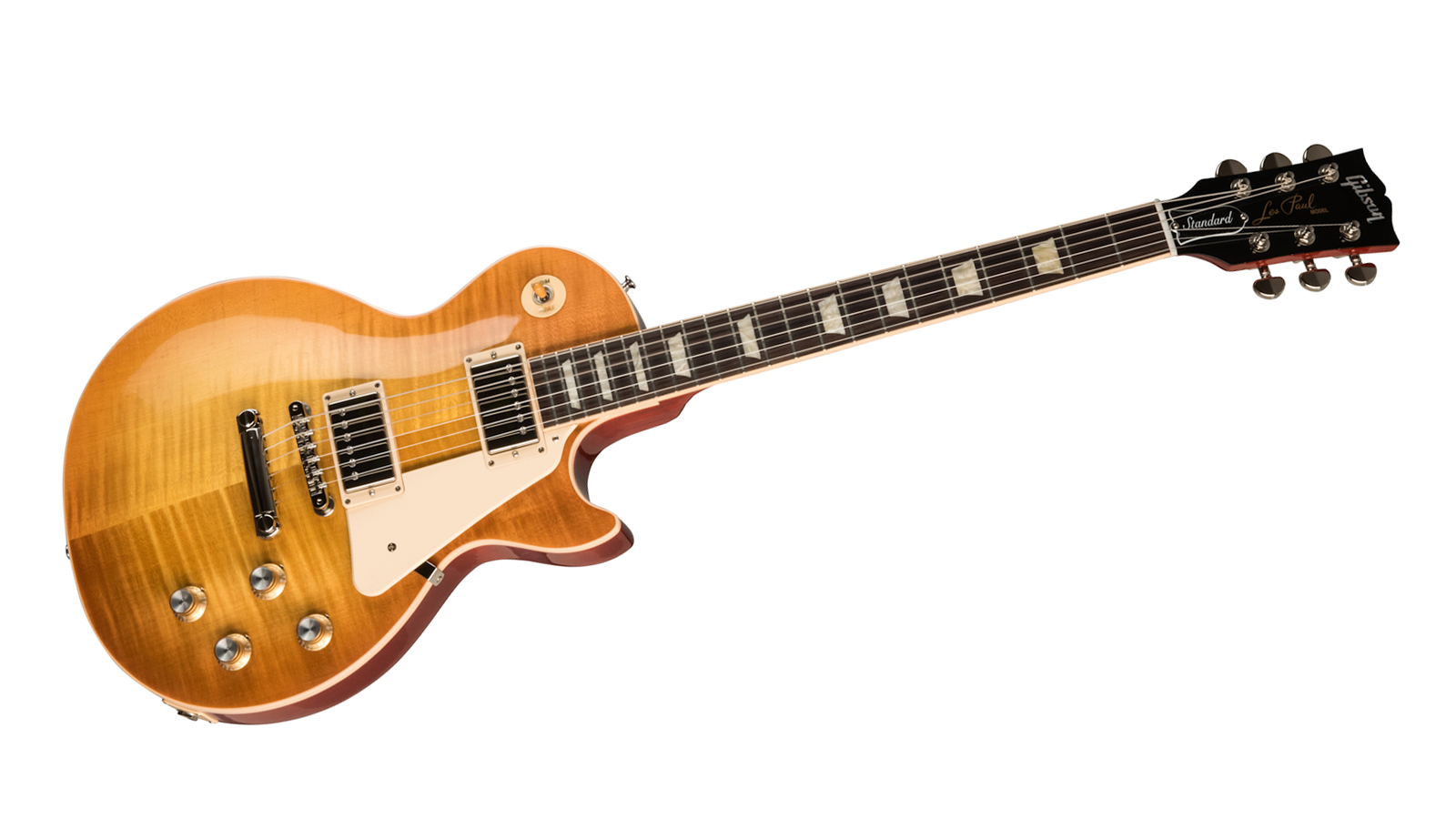
1. Gibson Les Paul Standard
Our expert review:
Specifications
Reasons to buy
Reasons to avoid
The Gibson Les Paul is one of the most iconic guitars of all time. Though there are different tiers in the Les Paul family (it’s gotten a little confusing over the years), the Standard has always stood tall as the company’s flagship outside of the more expensive Gibson Custom Shop range.
The Les Paul Standard currently comes in two main variations - ’50s and ’60s. Although on the surface, these guitars look very similar, they have a few distinct differences. The first of which is the pickups. The ’50s model is loaded with the classic Burstbucker 1/2 set, whereas the ’60s model comes with the Bustbucker 61T/61R. The most apparent distinction between the two models is the neck profile. The ’50s model opts for a rounder, fatter neck that harkens back to the early years of the Les Paul. Whereas the ’60s model adopts the “60s slim-taper” profile, resulting in a thinner, faster neck.
Each model has its own range of finishes and comes with period-accurate control knobs. If we had to choose between these two models, we’d have to go for the ’60s variation, pictured above. The slim neck simply makes it a dream to play.
If you’re hoping to tap into the tones adopted by classic rock players like Jimmy Page, Gary Moore and Joe Perry – or even the more metallic crunch of guitarists like James Hetfield, Adam Jones and Matt Heafy – look no further. The Gibson Les Paul Standard always has been, and always will be, the real deal.
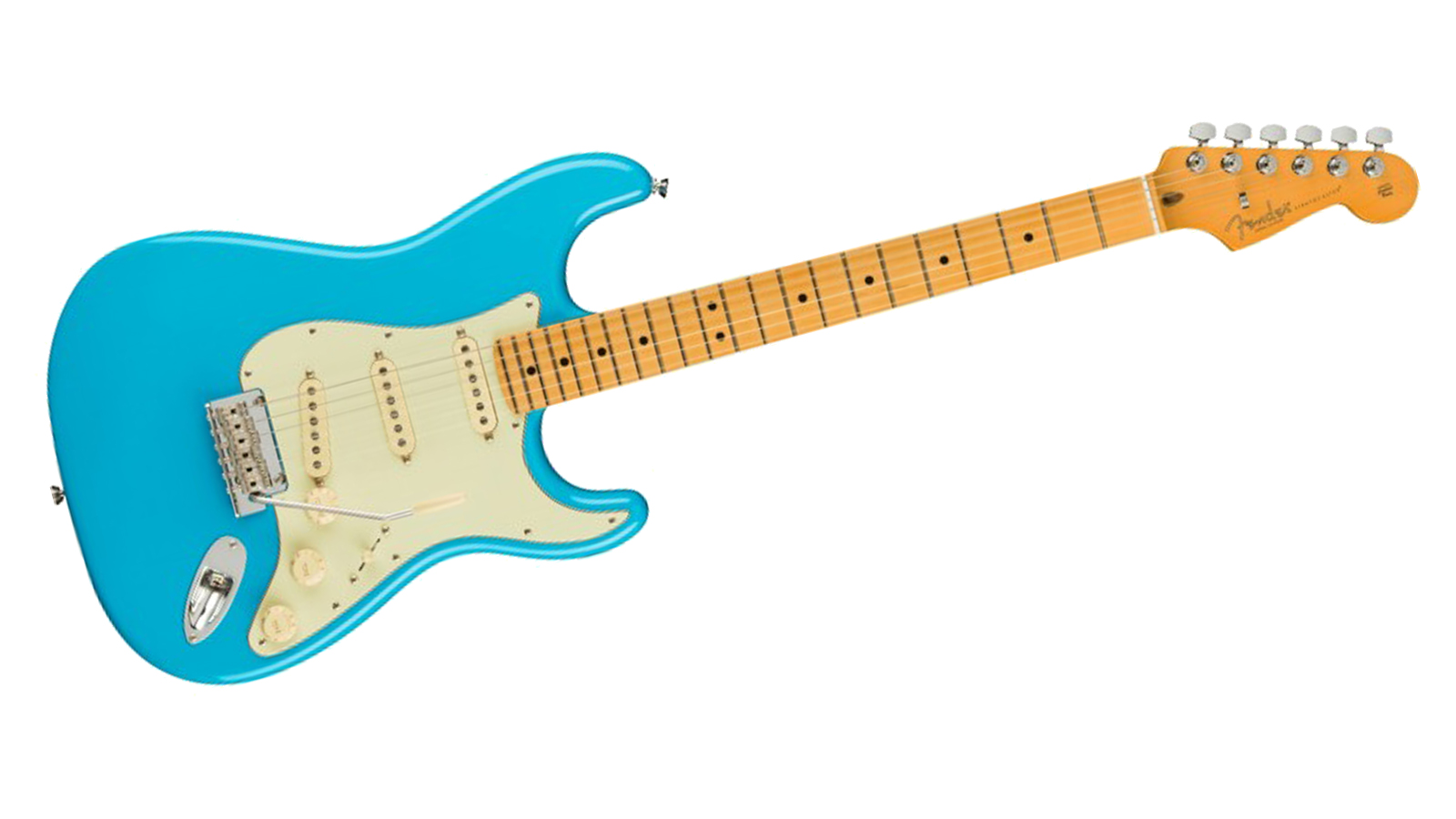
2. Fender American Professional II Stratocaster
Our expert review:
Specifications
Reasons to buy
Reasons to avoid
The initial American Professional series was so popular, it ended up accounting for over half of Fender’s instrument sales. Naturally, big things were expected when The Big F announced a revamp in 2020, and the new line certainly didn’t disappoint.
While Fender Stratocasters don’t quite have the thickness that Les Pauls are known for, they have an ability to slice through the mix with a more focused attack, and offer more versatility thanks to the dynamic range of single-coil pickups and a five-way selector.
Players searching for a little more firepower may end up preferring a superstrat – fitted with humbucking pickups – but, in all fairness, there’s a lot you can get done with a Strat in its classic form. If in doubt, just ask Swedish super-shredder Yngwie Malmsteen…
Read the full Fender American Professional II Stratocaster review
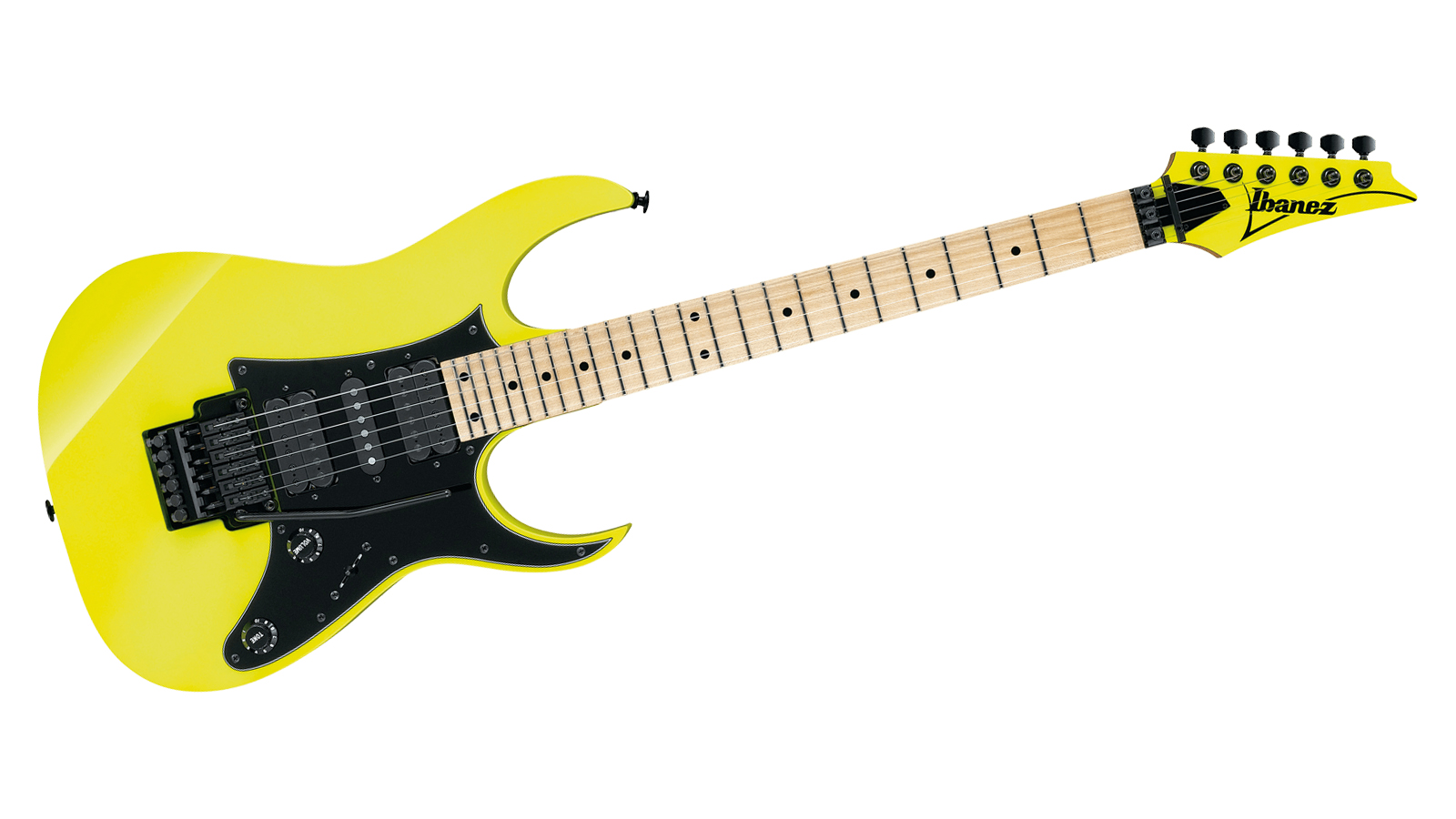
3. Ibanez RG550
Our expert review:
Specifications
Reasons to buy
Reasons to avoid
Introduced by Ibanez in 1987, the RG series marked a new age for the superstrat. Previous Ibanez models, like the Roadstar and the Blazer, were closer to the Fender guitars that inspired them, but the first RG – the famous 550 – felt like a guitar from the future (it was, after all, partly based on Steve Vai’s designs for his JEM777 signature).
Angular and aggressive in both appearance and tone, it was aimed at players who were looking to push the boundaries of guitar – which explains why the likes of John Petrucci, Paul Gilbert and Richie Kotzen were seen playing RG series instruments in the years that followed.
The double-locking Floyd Rose tremolo system found on these models also allowed players to extend the range and add more expression via the floating bridge – a tradition that rightly continues to this day in the Ibanez Genesis Collection.

4. Jackson USA Signature Adrian Smith San Dimas SDQM
Our expert review:
Specifications
Reasons to buy
Reasons to avoid
“If I have to mess around with a guitar too much, I kind of lose interest with it… it’s got to be right,” explained Adrian Smith when asked about his Jackson guitars.
Though the Iron Maiden legend has played Les Pauls over the years, most notably his 1972 Gold Top, his signature Jackson superstrat is undoubtedly his main instrument of choice.
There’s an affordable version in the Jackson X series, but if you’re after the very same guitar that was designed and played by one of the pioneering minds in heavy music, it simply has to be the San Dimas SDQM.
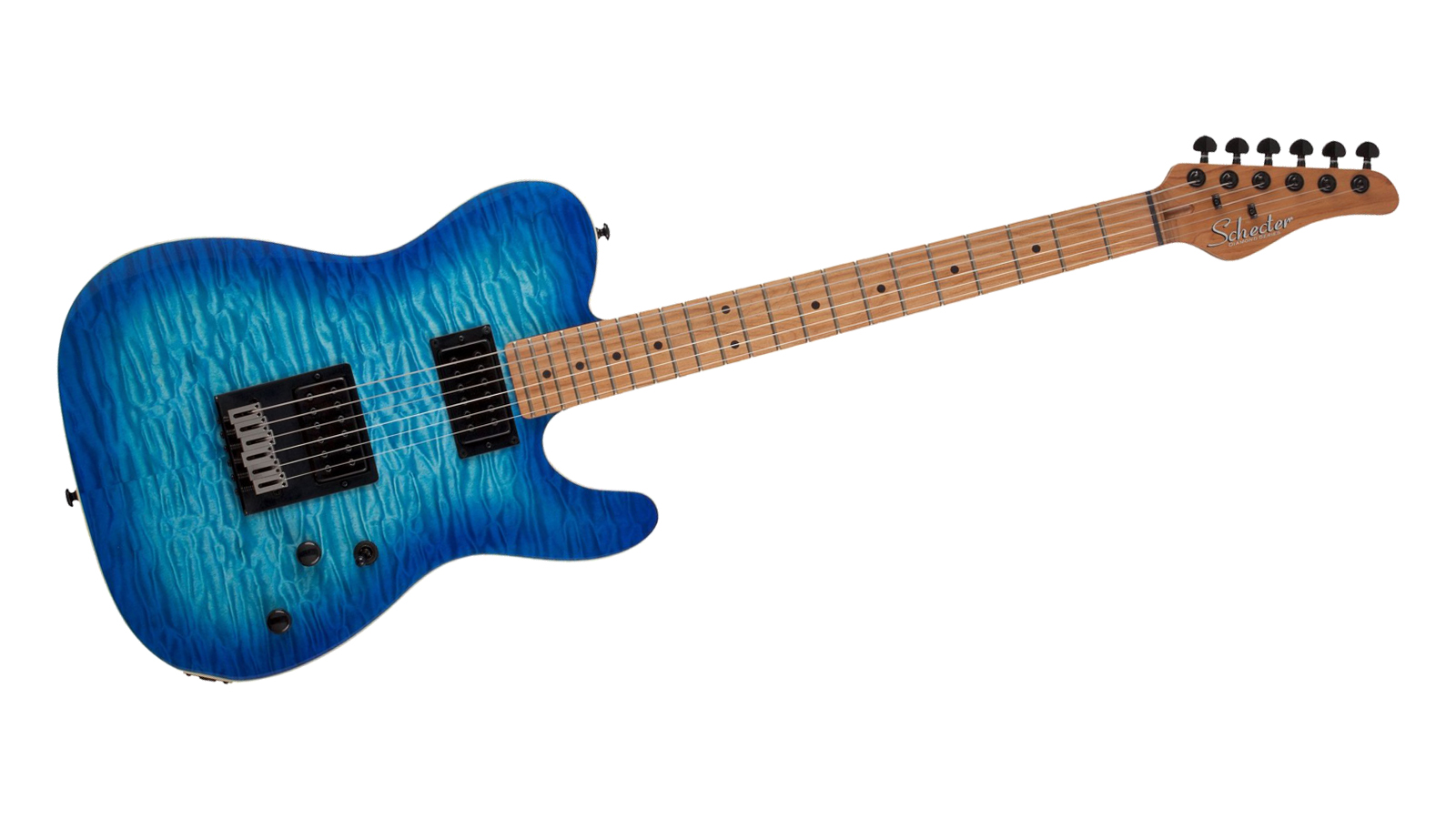
5. Schecter PT Pro
Our expert review:
Specifications
Reasons to buy
Reasons to avoid
Though it’s known for producing some truly jaw-dropping metal axes, there’s a lot to be said for Schecter’s more classic and vintage-inspired offerings. The two new PT Pro models announced last year, for example, strike a perfect balance between old-school design and modern functionality, with Schecter’s Z-Plus humbuckers bringing more power to that timeless T-style shape, and a roasted maple neck offering consistent playability no matter what the weather conditions.
Which means the only difficulty will be deciding which of the transparent finishes to go for – will it be the Blue Burst or the Purple Burst?
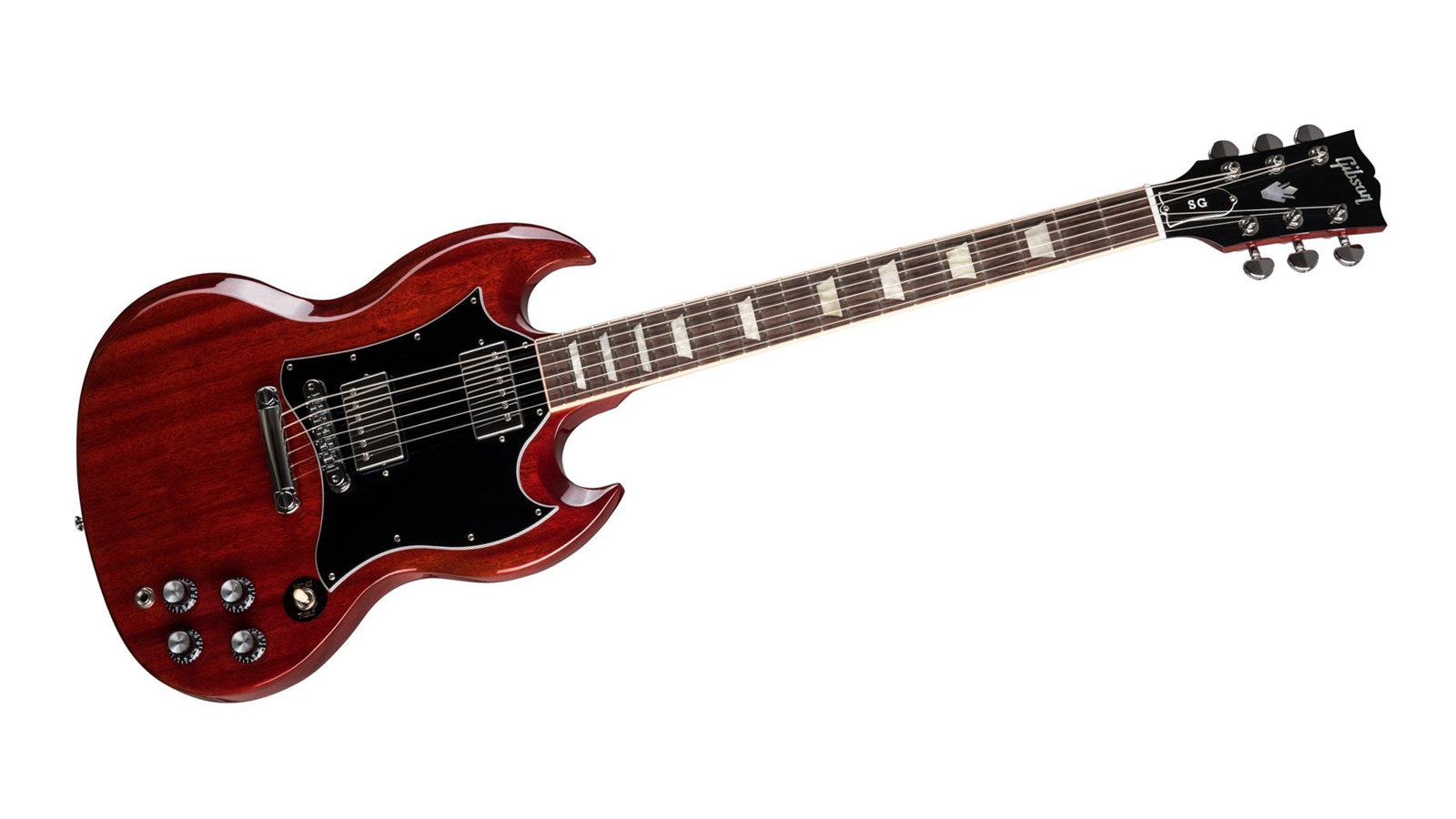
6. Gibson SG Standard
Our expert review:
Specifications
Reasons to buy
Reasons to avoid
The Gibson SG was first introduced in 1961 as part of the Les Paul range, but by 1963 it had become its own line – the initials standing for ‘solid guitar’. The thinner and more contoured body made it lighter and more comfortable for musicians, and, due to the shallower neck profile and double-cut body, it was more playable too.
Thanks to players like Eric Clapton, Tony Iommi and Angus Young, the guitar would become synonymous with rock, often known for having more bite and midrange than a Les Paul, which tend to be darker-sounding.

7. Gretsch G5220 Electromatic Jet BT
Our expert review:
Specifications
Reasons to buy
Reasons to avoid
As we mentioned, Angus Young was monumental in popularizing the Gibson SG, but a very big part of that classic AC/DC sound came from his older brother, Malcolm, who – before sadly passing away in 2017 – was rarely seen without his natural-finish Gretsch Jet.
This Jet BT from the more affordable Electromatic series might not be a doublecut like Malcolm’s, but it certainly offers a lot of the classic Gretsch tones and looks for those on a budget.
Of course, it’ll accommodate your best rockabilly licks with effortless ease but, thanks to the Black Top Broad'Tron humbuckers, you’ll also be able to dial in some pretty impressive hard rock tone

8. Fender Parallel Universe Volume II Troublemaker Tele Deluxe
Our expert review:
Specifications
Reasons to buy
Reasons to avoid
Though it’s clearly an instrument deeply rooted in country music, a fair few rock players have sworn by their Fender singlecut over the years – from original masters like Muddy Waters and George Harrison to the likes of Andy Summers, Jeff Buckley and Richie Kotzen. And more metallic players like Rob Zombie guitarist John 5 and Slipknot’s Jim Root have depended on their Telecasters in the studio and on stage, even putting their own signature models out over the years.
This Troublemaker from Fender’s Parallel Universe range packs more power than your typical Telecaster, thanks to the combination of a mahogany body and neck with twin humbuckers, which are more typical of Les Paul-style guitars. A truly unique ‘best of both worlds’ instrument.
Best rock guitars: Buying advice

Electric guitars come in all shapes, colors and sizes – but perhaps the most crucial consideration will be the pickups carried inside. For example, if your ultimate guitar god is Ritchie Blackmore or Yngwie Malmsteen, you may well prefer the sound of single-coil electric guitar pickups. Alternatively, if you want to sound like Slash or Zakk Wylde, who are both known for darker and thicker guitar tones, you’ll probably want medium or high-output humbuckers respectively – Slash favoring Seymour Duncan Alnico IIs and Wylde opting for the metallic beef that comes with active EMGs.
The pickups make a huge difference in how the guitar is voiced, so it’s always worth doing a little research on what your heroes were using on your favorite albums, and going from there…
Then, of course, you’ll need to think about the guitar build itself. Some players will prefer the slinkiness of a Strat and others might prefer the girth of a Les Paul-style model. Beyond that, it’s also worth thinking about the bridge – if you’re a Steve Vai or Joe Satriani fan, you’ll need a double-locking tremolo system to recreate all those divebombs and screams with the whammy bar.
Other players – for example, those Slash and Zakk Wylde fans we mentioned earlier – might prefer what is often called a ‘hardtail’, with no whammy bar whatsoever for maximum resonance and sustain. So there’s plenty to consider before you find the right rock guitar for you…
Find out more about how we make our recommendations and how we test each of the products in our buyer's guides.
Related buyer's guide
You can trust Guitar World
- Unleash your low-end beast with the best bass guitars for rock
- Blow the budget with the best high-end electric guitars
- Heavier players should check out the best metal guitars
- Freshen up with the best electric guitar strings
- Best guitars for indie rock: iconic brands and signature sounds
- The best guitar cables for electric, acoustic and bass
- Secure your guitar in style with the best guitar straps
- Best distortion pedals: add more crunch to your sound
- Play it loud with the best punk guitars
- Discover quality, prestige and innovation with the best Gibson guitars
All the latest guitar news, interviews, lessons, reviews, deals and more, direct to your inbox!
Amit has been writing for titles like Total Guitar, MusicRadar and Guitar World for over a decade and counts Richie Kotzen, Guthrie Govan and Jeff Beck among his primary influences as a guitar player. He's worked for magazines like Kerrang!, Metal Hammer, Classic Rock, Prog, Record Collector, Planet Rock, Rhythm and Bass Player, as well as newspapers like Metro and The Independent, interviewing everyone from Ozzy Osbourne and Lemmy to Slash and Jimmy Page, and once even traded solos with a member of Slayer on a track released internationally. As a session guitarist, he's played alongside members of Judas Priest and Uriah Heep in London ensemble Metalworks, as well as handled lead guitars for legends like Glen Matlock (Sex Pistols, The Faces) and Stu Hamm (Steve Vai, Joe Satriani, G3).

